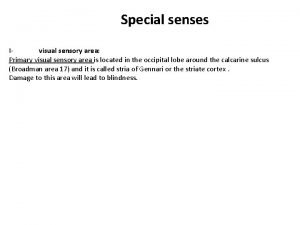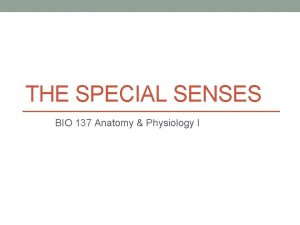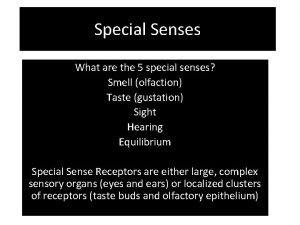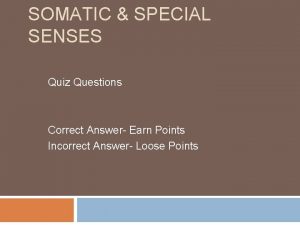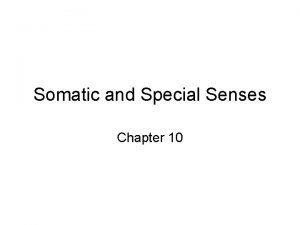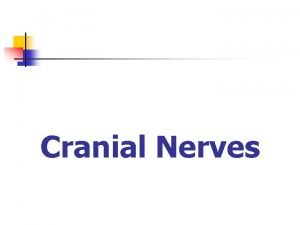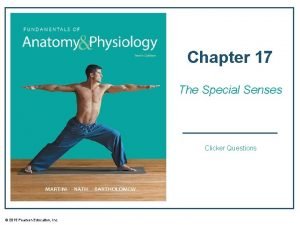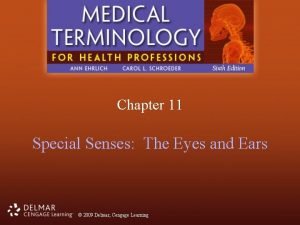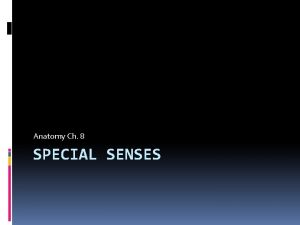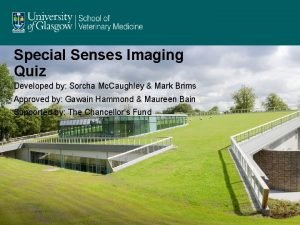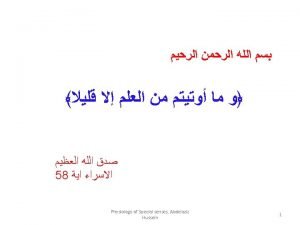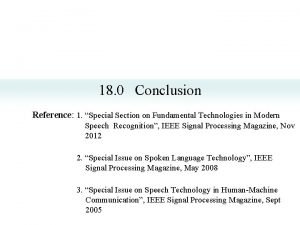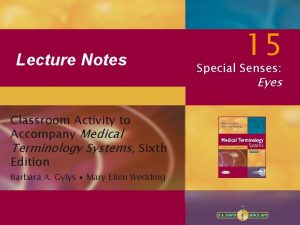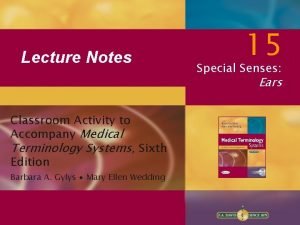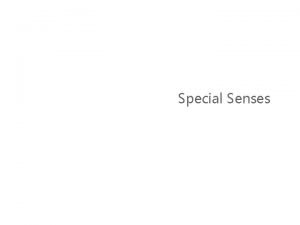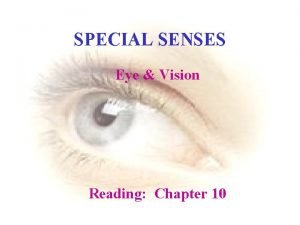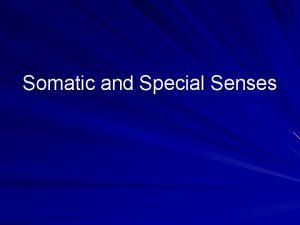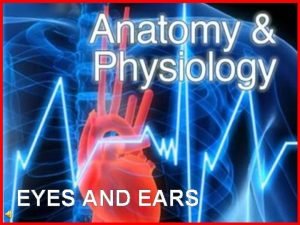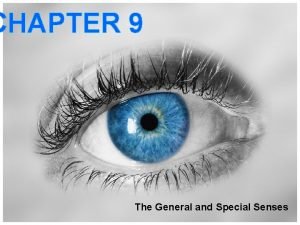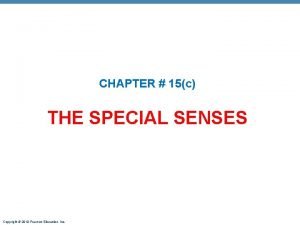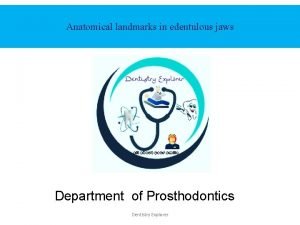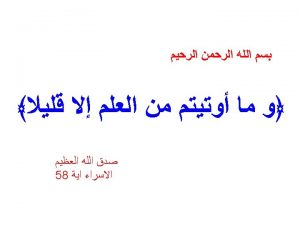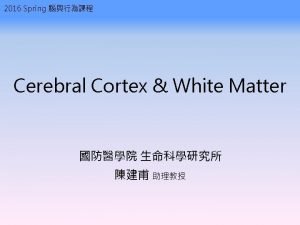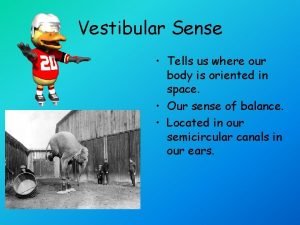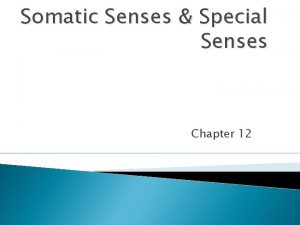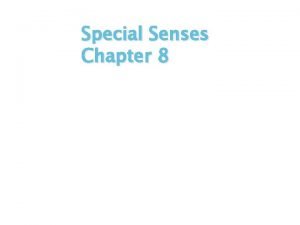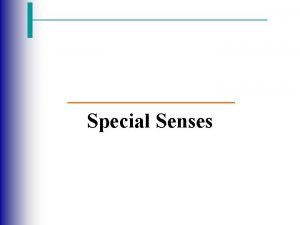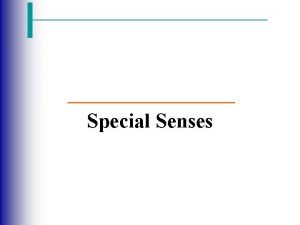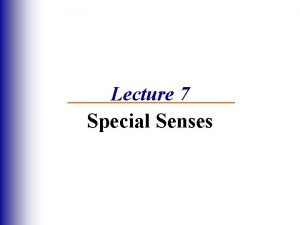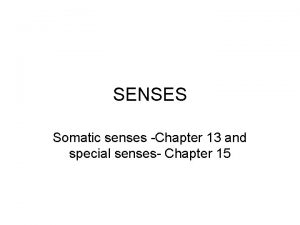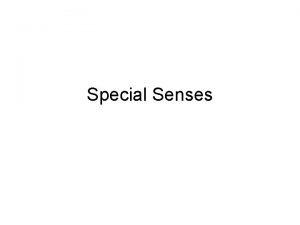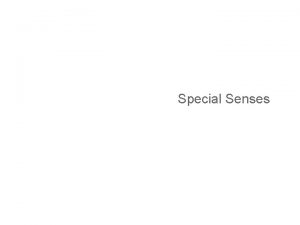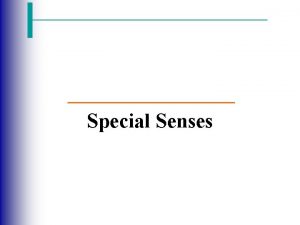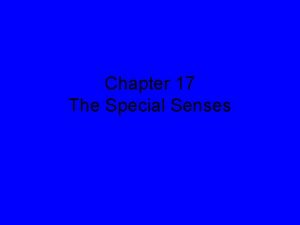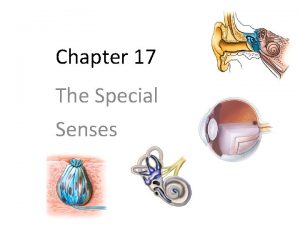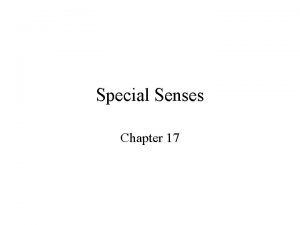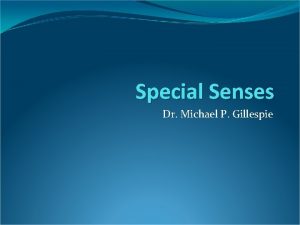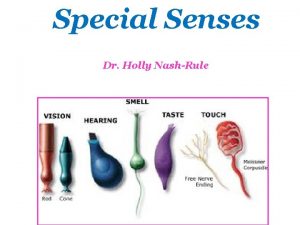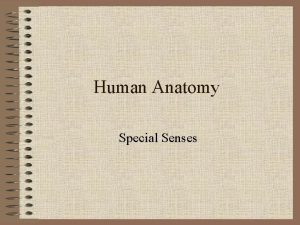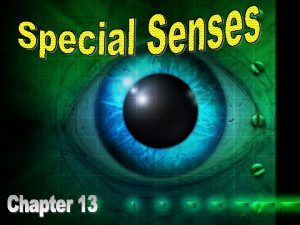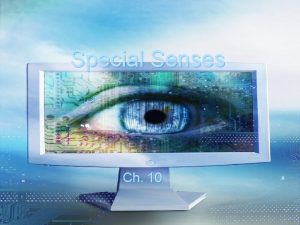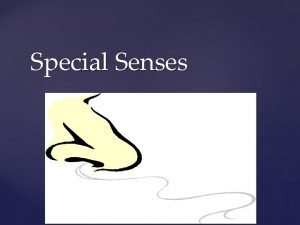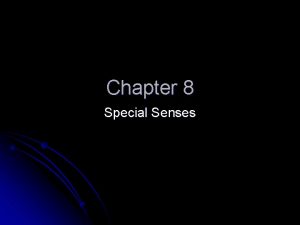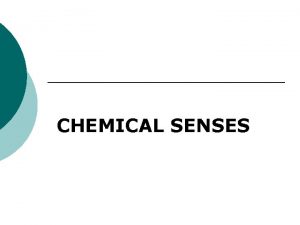Special senses Ivisual sensory area Primary visual sensory






























- Slides: 30

Special senses Ivisual sensory area: Primary visual sensory area is located in the occipital lobe around the calcarine sulcus (Broadman area 17) and it is called stria of Gennari or the striate cortex. Damage to this area will lead to blindness.





Unimodal visual association area is located on each side of area 17 and is represented by area 18 & 19 that involve occipital lobe and extend to temporal lobe. This area is responsible for: Visual memory. Visual recognition. Color perception. Damage to this area will lead to visual agnosia.




II auditory sensory area: ● Primary auditory sensory area is located on the superior temporal gyrus (Broadman areas 41 & 42) and this region is also called the gyrus of Heschel. Damage to this area will lead to deafness. ● Unimodal auditory association area is located on the superior temporal gyrus on a flat area called planum temporale (part of Broadman area 42 and Broadman area 22). The function of this area: Recognition of melodies. Understanding of the language. Damage to this area will lead to auditory agnosia.



III- Olfactory sensory area or system: This system is characterized by: -Direct relay to cerebral cortex (not pass through the thalamus). -Ipsilateral representation. -Has the ability for regeneration. Primary olfactory sensory area (septal area, uncus and amygdaloid body). Olfactory pathway: Olfactory nerves → olfactory bulb → olfactory tract → end by division into two stria → medial stria end to septal area while the lateral stria end into uncus and amygdaloid body. Damage to this pathway will lead to anosmia (unable to smell). ● Unimodal olfactory association area is located on the anterior part of the parahippocampal gyrus and this part is called entorhinal cortex. The function of this area is for association of the smells.




IV- Gustatory area (taste area) is located in the roof of the lateral fissure closely related to insula.



Motor processing areas: Primary somatic motor area: it is situated in precentral gyrus (Broadman 4) and it is responsible for giving final motor commands. The body is represented in contralateral way. 2 -The body is represented in upside down manner. 3 -The representation of the body is according to the motor importance and fine movements performance rather than the muscle mass. Damage of the primary motor area will lead to paralysis. Unimodal somatic motor association area: it is usually termed as premotor area (Broadman 6) that is located on superior and middle frontal gyri. This area is responsible for: 1 -association of motor activity. 2 -preparation of programs for skill movements. Damage of this area will lead to apraxia.





Multimodal cortical association areas: The main multimodal cortical association areas are: -Anterior multimodal cortical association area (prefrontal cortex that lies anterior to the precentral area) is responsible for personality and their related things. -Posterior multimodal cortical association area (in junctional region of parietal, temporal and occipital lobes). There are two main important centers included in this area which are: the language centers (in the cerebral dominant) and the visual spatial localization centers (in noncerebral dominant). -Limbic system. This related to medial side of the cerebrum and concern with emotional behavior.


The laterality of the cerebral functions: (more or less it could be related to multimodal cortical association areas). The dominant cerebral hemisphere has the main following functions or centers: 1 - Language. 2 - Handedness. -The left cerebral hemisphere is often responsible for: Language, mathematics and logics. -The right cerebral hemisphere is often responsible for: Concept of pictures, music and spatial abilities.


Language areas: -Sensory speech area (Wernike's area) (receptive): It is located on Broadman areas 40, 39, 22, 37 of the dominant cerebral hemisphere. It is responsible for: -Comprehension of the language (spoken and written language). -Syntax which is the sequences of words in a sentence. Damage to Wernike's area will lead to sensory aphasia (not understand spoken or written language, which is called complete word deafness). -Motor speech area (Broca's area) (expressive): It is located on pars triangularis and pars opercularis (Broadman area 45 and 44). It is responsible for control of the muscles of respiration, larynx and tongue in order to produce speech. Damage to Broca's area lead to motor aphasia which is difficulty to produce proper phonation in spoken language.

 Distinguish between general senses and special senses.
Distinguish between general senses and special senses. Messiners
Messiners Multimodal association areas
Multimodal association areas Bio 137
Bio 137 Anatomy labeled
Anatomy labeled The cones of the retina are coursera quiz answers
The cones of the retina are coursera quiz answers Chapter 10 somatic and special senses
Chapter 10 somatic and special senses Cranial nerve mnemonic
Cranial nerve mnemonic Chapter 17 special senses answer key
Chapter 17 special senses answer key Learning exercises chapter 11 medical terminology
Learning exercises chapter 11 medical terminology Anatomy and physiology chapter 8 special senses
Anatomy and physiology chapter 8 special senses Cranucle
Cranucle Special senses quiz
Special senses quiz Physiology
Physiology Signal conclusion
Signal conclusion Building vocabulary activity: the special senses
Building vocabulary activity: the special senses Building vocabulary activity: the special senses
Building vocabulary activity: the special senses Houses the receptors for hearing
Houses the receptors for hearing Chapter 10 special senses
Chapter 10 special senses The general
The general Somatic and special senses
Somatic and special senses Special senses the eyes and ears
Special senses the eyes and ears The general and special senses chapter 9
The general and special senses chapter 9 Pearson
Pearson Chapter 15 special senses
Chapter 15 special senses Primary stress bearing area of mandible
Primary stress bearing area of mandible Tabes dorsalis syphilis
Tabes dorsalis syphilis Pemrograman konvensional
Pemrograman konvensional Quadrilaterals quiz
Quadrilaterals quiz Outer layer of cerebrum
Outer layer of cerebrum Vestibular senses
Vestibular senses


